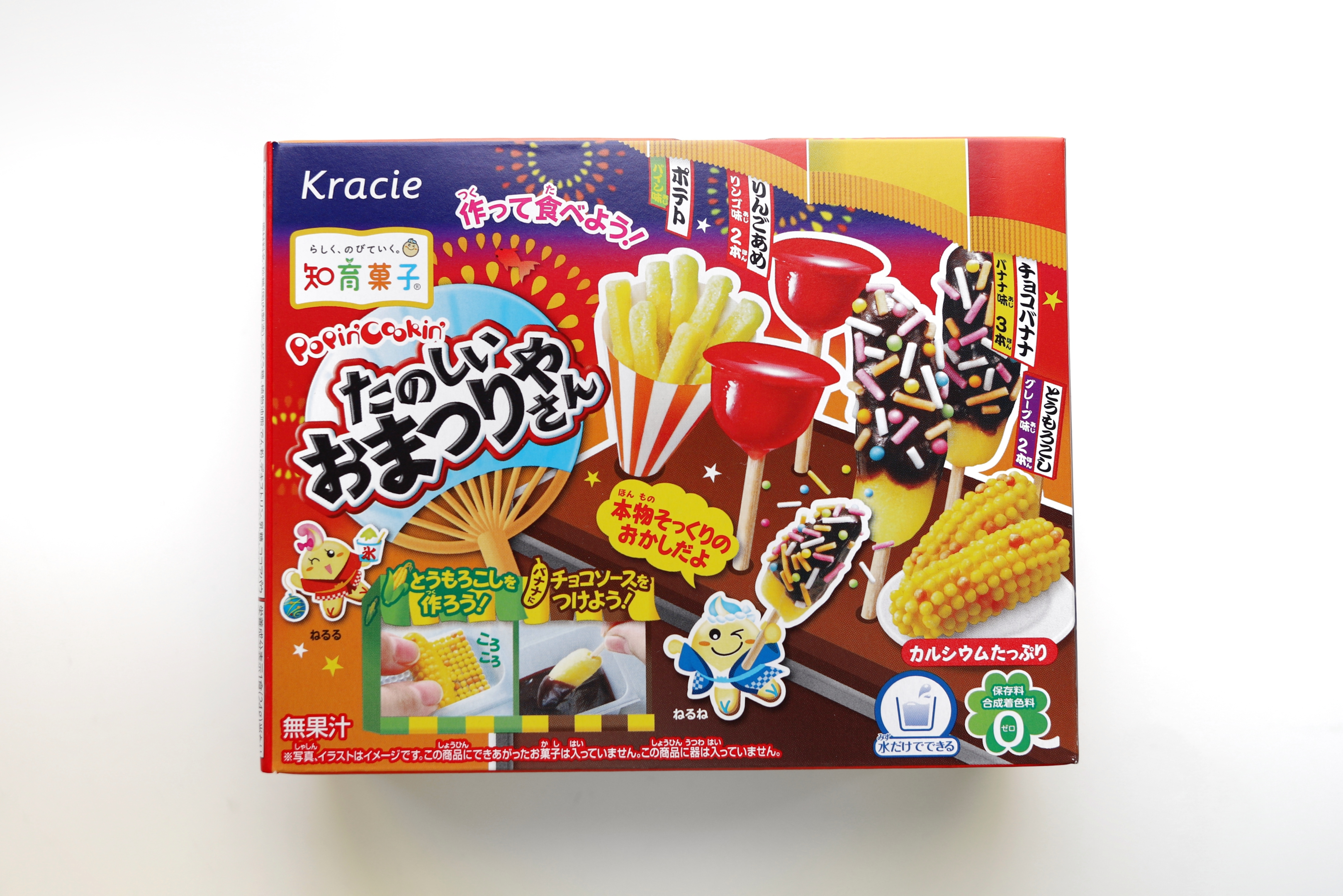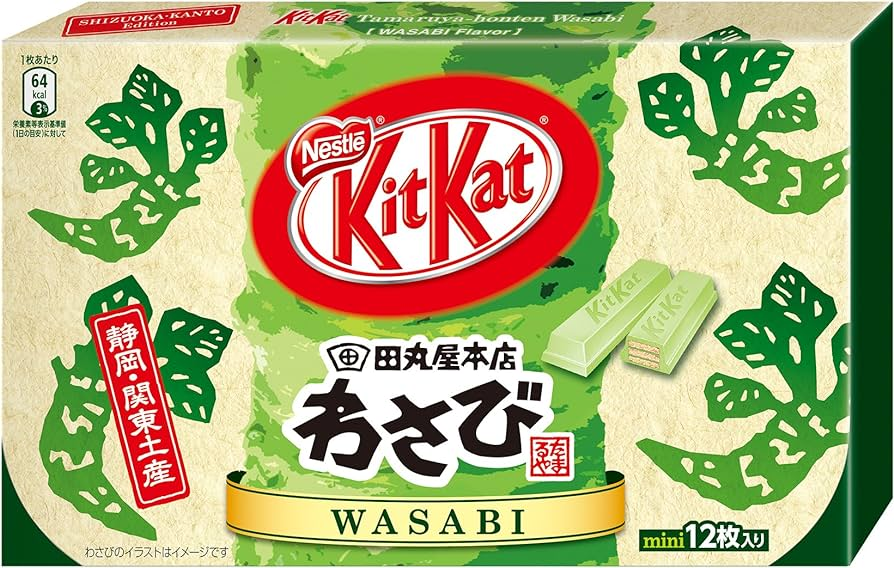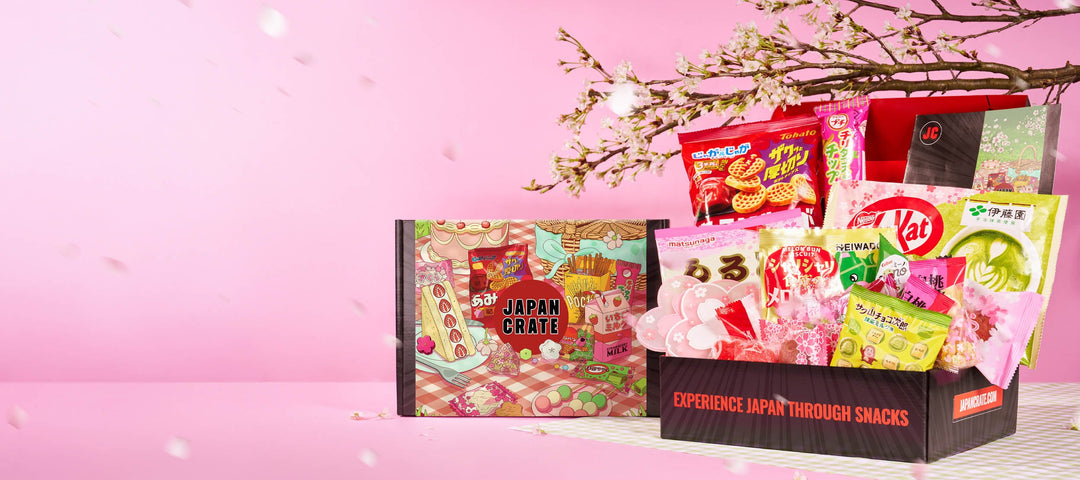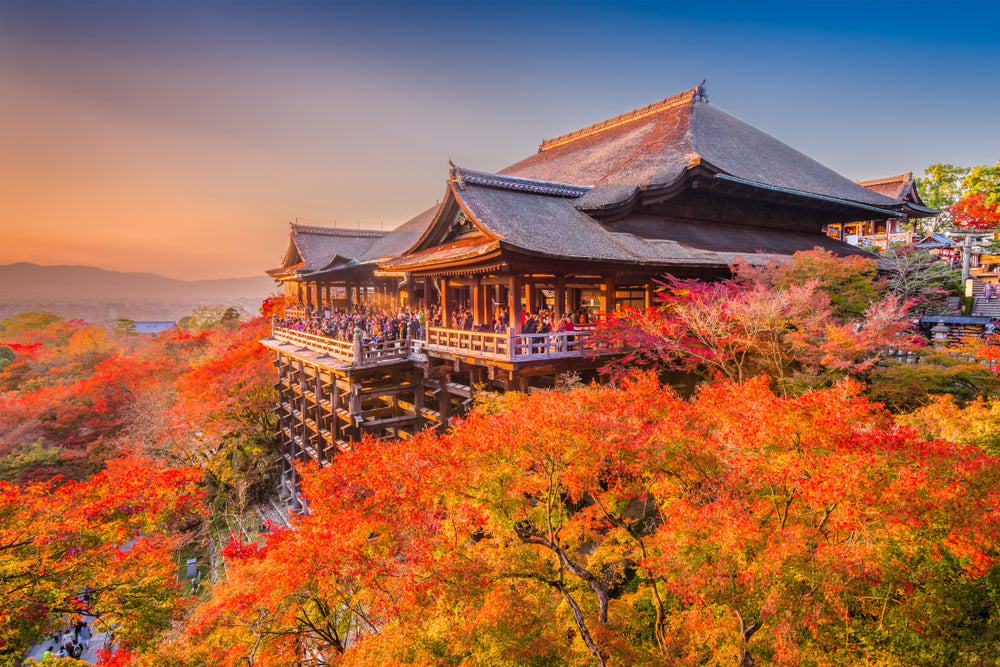Ultimate Guide to Japanese Snacks

The Japanese culture has in fact, gained a huge following around the world with its amusing game shows, animes, captivating cherry blossom, and delicious cuisine. Thousands of travelers are being drawn to travel to the Land of the Rising Sun by its beautiful attractions, like Mount Fuji and Osaka Castle. But, Japan is not only known as the Land of the Rising Sun but also a land with a lot of delicious Japanese snacks to offer.
The variety of snacks with a Japanese twist may be overwhelming, from ramen noodles to rice crackers, pocky sticks to green tea, and many more delicious Japanese snacks with bizarre flavors. Some people may have favorites but want to explore new options, and some just enjoy their go-to simple snacks.
Continue reading to discover more and savor these commonly eaten popular snacks and treats for your sweet teeth. Here are the top 5 most favorite Japanese snacks.
Top 5 Most Favorite Japanese Snacks
Dagashi Snacks

First on the list are the Dagashi snacks. If you are looking for tasty Japanese snacks at a reasonable price, then Dagashi snacks are what you are looking for. Aisles of Japanese food snacks, including inexpensive Japanese snacks for kids called Dagashi, may be found in many traditional dagashi stores and in both Tokyo and Japanese food supermarkets. Dagashi, slang for pointless nibbles, is the moniker given to inexpensive Japanese candies and snack foods. Kids are the target market for Dagashi snacks.
Examples of Dagashi Snack Options
Dagashi snacks such as Baby Star Ramen, Umaibo, and Ramune candies can be purchased for as little as 25 yen in many convenience stores and come in both sweet and savory varieties. Because they are mass-produced, of questionable quality, include artificial chemicals, and are typically sweetened with syrup or fruit juice, these Japanese snacks are not considered nutritious. However, because of their affordable pricing and kawaii Japanese packaging, youngsters continue to adore them.
Pocky

Pocky, a famous 1966 snack from the Glico company, was made to be a portable, light snack that everyone could enjoy on the go. Pocky Japanese Snacks offers over 50 flavors, including chocolate banana, green tea, and honey. It also offers many varieties such as Pocky Crush, Pocky G, and Reverse Pocky. Regional flavors, including Kobe Wine, Nagano Grape, Yubari Melon, Royal Milk Tea, and Honey Pocky, are some of the best to taste.
Where to Find Pocky
Pocky is available outside of Japan, and most of Asia, Europe, and even North America have all grown to love Pocky. Due to its size, it is the ideal travel food, particularly for lengthy bus or rail travels. Take home a package of exciting Pocky flavors with Sugoi Mart's Pocky selection. The selection includes Pocky in various flavors, from sweet and creamy to fruity and crunchy.
Gummies

There are hundreds, if not thousands of different unique sweets called gummies available in Japan, and new ones are always being released. Gummies are one of the traditional Japanese sweets made of gelatin, sugars, and natural or artificial flavors. One of the most adaptable and soft chewy candies ever, they are simple to mold into various shapes.
Types of Gummies
Nobody can dispute the allure of Japanese fruit gummies due to their wide range of tastes and distinctive textures. There is always a sort and flavor that you'll like, regardless of whether you prefer firm or soft gummies, those with fillings or sour ones! Concerned that you could consume too much of that delectable sugar? Don't worry! These best-selling Japanese candies also have unique collagen-containing beauty gummies and daily vitamins you can intake in a tasty way!
Grab a delicious candy box filled with gummies by selecting the top choices from Sugoi Mart's Gummies Collection, which includes everything from juicy gummy candy to gummy strips and more!
Senbei

You don't need to travel far when thinking of finding any more traditional snack option than Japanese traditional rice crackers or senbei! Given that the word senbei was first used in writing about 737, this one has definitely endured the test of time! Small to tremendously enormous kinds of these rice crackers are available, and they come in sweet or savory variations.
Available Types of Senbei
There are various variations of senbei based on grains mixed, wheat, fish, or shrimp. The majority of Japanese rice crackers or senbei are manufactured from rice flour. They are typically baked, grilled, or roasted over charcoal while being brushed with soy sauce, mirin, and occasionally another distinctive condiment. You may find them in various inventive shapes and flavors, such as curries and slightly salty fishbone bases. Popular choices range from sugar-coated and nori (Japanese seaweed)-wrapped senbei to even more contemporary chocolate variations!
Kit Kat

This guide wouldn't be the ultimate without the Japanese version of Kit Kat. The unusual and occasionally eyebrow-raising designs make these very distinctive Japanese gifts, as it brings out unique Japanese tastes. Since the US first brought Kit Kat to Japan in the 1970s, the country has changed a long way.
Types of Japanese Kit Kats
Japan's regions each have unique specialties to promote regional tastes that include almost 300 different flavors! Traditional Japanese flavors include wasabi, matcha, and red bean paste.
Additionally, strawberry cheesecake, cookies and cream, mint, and, of course, sakura (cherry blossom) are among the sweet flavors of Japanese Kit Kats. There are also many different savory flavors, such as baked sweet potato, azuki bean, roasted soybeans, and chestnut. Additionally, extremely sought-after limited editions include tiramisu and Tokyo Banana. It is always fun to explore these many flavors.
Head to Sugoi Mart's Kit Kat Collection for an impressive selection of flavors that transport you throughout Japan. From traditional to regional and seasonal, you'll find options to satisfy any sweet craving. Consider subscribing to a Japanese snack box like Japan Crate for more exciting Kit Kat flavors. Each monthly delivery of Japan Crate includes a guaranteed Kit Kat bag, offering you a delicious way to enjoy Japan's flavors.
Bonus Favorite Snack: DIY Candy
Beyond the snacks mentioned above, Japan is also the king of DIY candy creations. These candy options are quite different from what you'd typically see on store shelves. Instead of already crafted goodies ready to eat, these interactive sweet snacks require hands-on molding, sculpting, and assembling. These DIY candies were initially created to teach children essential attributes, such as patience and coordination. They also allow parents and kids to work together to create fun snacks, offering an additional setting for bonding.
The first version of DIY candy appeared in 1979 by the brand Kracie. It wasn't long before Kracie included more DIY candy kits in its repertoire, such as the Nerunerunerune line, which includes powders that change color and texture with the addition of water. Since then, many candy kits from Kracie and other similar brands have become available.
Types of DIY Candy
Various types of DIY candy are available, from options that allow you to create candy hamburgers to yummy candy sushi. Some options even allow you to craft homemade chocolates in the shapes of beloved anime or Japanese pop culture characters. Depending on the kit, you may also find options that are more similar to science experiments, as you and your kids will observe changes in color, texture, etc., during candy assembly.
Are Japanese Snacks Healthy?

While not all Japanese snacks are nutritious, many are considered healthier options for various western snacks. If you're a snacker at heart, you'll know that there are many different types of Japanese snacks to select from. Japanese best snacks are low-calorie and sugar-free, perfect for your health. You won't even notice the difference between these and typical sinful, delicious foods, from chocolate balls and cream cakes to fruit jellies.
This is because they are frequently created with premium components that differ significantly from those we regularly find in grocery shops in the US and Europe. For instance, white rice flour rather than wheat flour is frequently used to make popular Japanese treats like rice crackers. Contrary to rice crackers flour, wheat flour has a high amount of gluten that can be difficult for your digestive system and cause bloating. Additionally, properly obtained natural foods free of chemicals and additives are frequently used in Japanese favorite snacks.
Are Japanese Snacks Popular?

Japan is renowned for its experiments with novel food combinations. Foodies around the world adore Japanese delicacies for their unique, bizarre, and intriguing variety. They're popular for a good reason, and they are incredibly tasty! People can taste robust flavors wherever and on the go, thanks to the convenience of snacking.
Japanese snacks are so enticing because there is something for everyone due to the enormous diversity of textures and flavors. Japanese snacks are like a bite-sized taste of Japan! Try a delicious sweet or savory snack to experience traditional, regional, and seasonal Japanese flavors, and you'll quickly discover why Japanese snacks are so popular.
Are Japanese Snacks Good?

One of the main reasons Japanese snacks are so good and well-known worldwide is the vast range of flavors you can buy, from gummy candies to Kit Kats. There are also innumerable distinct shapes, sizes, and textures of sweets available. The taste selection ranges from regional variations in addition to limited-edition alternatives.
Factors of Japan's Dominance in the Snack World
Variety is another factor that contributes to Japanese candy's superior quality, in addition to its mouthwatering flavors and well-known brand names. Furthermore, such snacks go far beyond pre-made, on-the-go foods. Japan's large selection of available high-quality snacks, the diverse array of tastes, and appealing packaging are just a few of the many reasons why Japanese snacks are so good.
How Much Do Japanese Snacks Cost?
Japan has some very good snacks, from those puffed corn stick to sponge cake and various snacks with wasabi flavor to those with takoyaki and salad flavor. All appear so alluring. It's simple to locate a nice snack wherever you are because practically every store that sells food, including supermarkets and convenience stores, has a section devoted to snacks. Many snacks have a price range of 10 to 100 yen, making them affordable for children. These delights look fantastic and have many interesting, unique features despite their low costs. These qualities set Japanese snacks apart from other cuisines.
Do Traditional Japanese Snacks Taste Different?

Popular traditional snacks are also sold in Japan. A fascinating aspect is how the Japanese people creatively combine the wide range of flavors on offer with their own culture. These snacks are so popular as they incorporate regional favorites like overly sweet potatoes, white potatoes, or apples into their composition.
Japanese traditional ingredients come in various flavors, from sour and salty to nutty and sweet, and they make excellent spices for snacks. Both adults and children enjoy them, and many travelers choose them to buy as gifts for their friends. You may have a lot of fun exploring different regions of Japan by searching for local treats.
Most Unique Snacks in Japan
Besides offering an exciting assortment of flavors, which seem to multiply continuously, Japan is well-known for having some of the most unique snacks in the world. From interesting to weird, Japan takes the cake in the department of snack creativity. As mentioned, Japan has mastered the creation of snacks that meld sweet and savory flavors effortlessly into one. Perhaps one of the most unique offerings in Japan is its wasabi-flavored sweets, like the wasabi Kit Kat; spicy, sweet, savory, and creamy, all rolled into one!
Perhaps one of the most bizarre offerings is the Heart Moko Moko Toilet Candy, which requires snackers to assemble a mini toilet and fill it with candy powder and water. Once it fizzes, you can drink the sweet candy-like drink with the provided straw. Other unique snacks include tomato-flavored chocolate, crispy roasted baby crabs, brown sugar karinto (crispy caramelized brown sugar-covered fried wafers), and candied squids. These are only a few of the fun snack offerings in Japan!
History of Japanese Snacks
Snacking has become an art in Japan. But how did Japan's snacks become a top request in the snack world? Japanese snacks have a 2000-year history, including the popular practice of powdering nuts and rolling them into dango-like shapes. With time came communication with China and the emergence of wagashi, a distinctively Japanese tradition and culture. Elegant Japanese desserts were made mostly with readily accessible fruits, nuts, and mochi.

On the other hand, Dagashi, an inexpensive Japanese snack provided a cheaper alternative to wagashi. Dagashi gained acceptance among both kids and adults throughout time. The diversity and flavors of Japanese food increased throughout the Meiji period (1868–1922), a time of modernization in Japan, as Japan began to open up to the outside world after a protracted period of isolation.
The market was stocked with both locally famous snacks and Western imports, which led to strong competition for the title of best snack in the 2000s and 2010s. Popular snack companies like Calbee Chips, Pocky, and Fanta Japan don't want to be surpassed, so they're always looking for fresh and inventive ways to manufacture products that can win over Japanese consumers with limited-edition tastes and seasonal products. Who knows what Japanese snacks and sweets will be the next to innovate?
It's Japan Crate Time!
The constant introduction of new flavors and intriguing textures makes it difficult to experience all the essential Japanese foods. But, don't worry. We got you. At Japan Crate, we make it a mission to give you the best of Japan snacks right in front of your door. Receive amazing Japanese delicacies every month, including must-try ramen and the newest Kit Kats and Pocky.
Why not look at what the Japan Crate offers this month? We've created this guide to help you learn a little bit more about the treats we send you each month on Japan Crate and perhaps help you find a new treat or pick up some new information about your favorite nibbles. Subscribe now! If you want to buy the snacks mentioned above instantly, just click this link. Enjoy!
Author Bio









Leave a comment